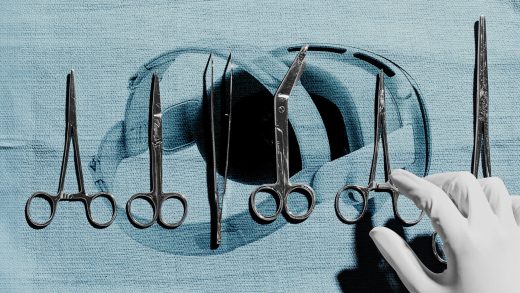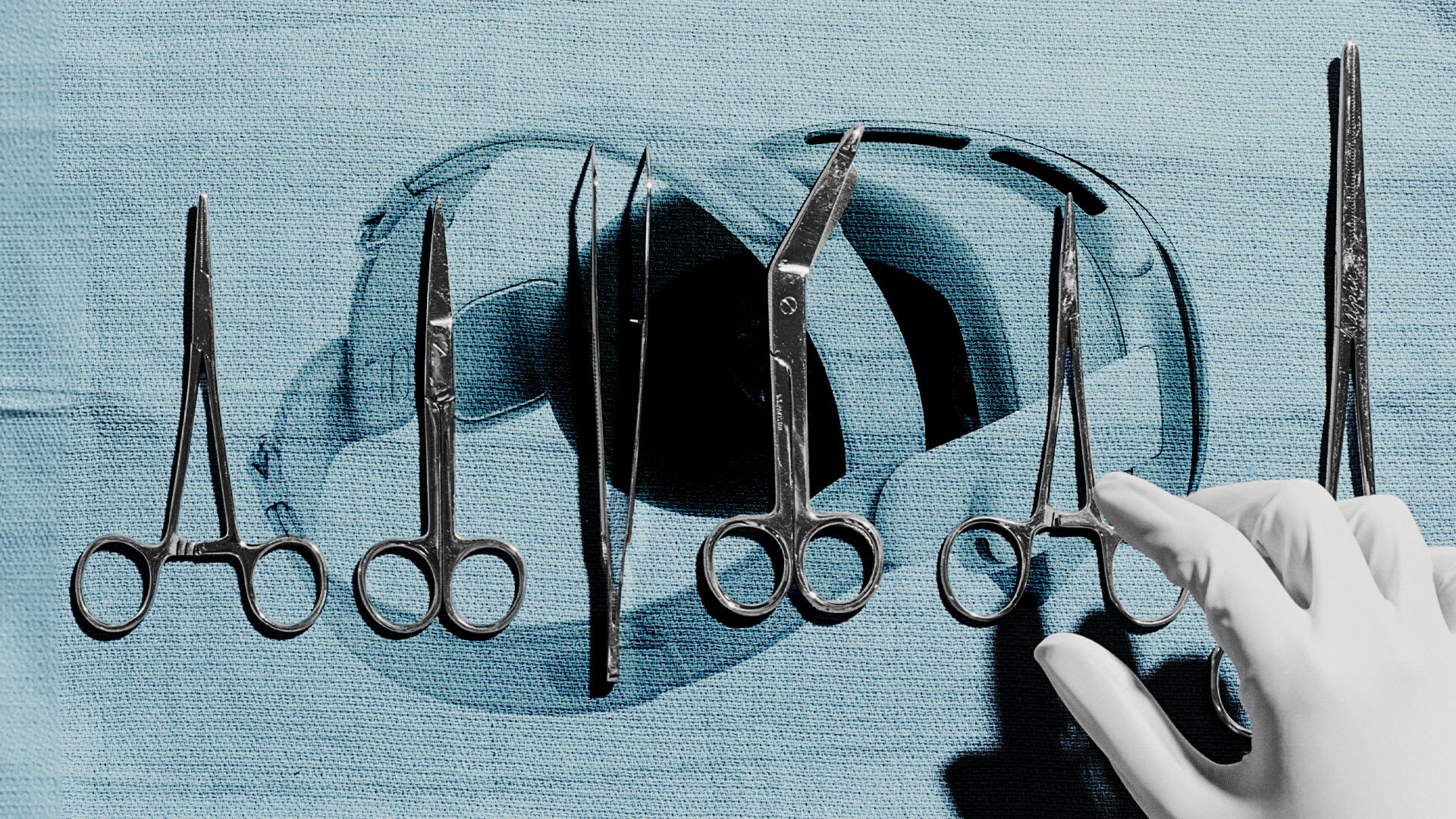Medical staff are using the Apple Vision Pro during surgeries. What could go wrong?
Medical staff are using the Apple Vision Pro during surgeries. What could go wrong?
Sure, first-generation iPhones and Apple Watches had their fair share of glitches, too—but none of these were involved in operating on the human spine.
BY Clint Rainey
Two British surgeons say that they used Apple’s new $3,500 headset to carry out Britain’s first virtual-reality operation. The team at London’s Cromwell Hospital, led by orthopedic surgeons Fady Sedra and Syed Aftab, used the Vision Pro to repair a patient’s spine. Neither surgeon donned the ski goggle-esque device themselves, but instead entrusted it to a nurse working alongside them, the Daily Mail has reported.
Nurse Suvi Verho tells the paper that the headset helped her during pre-op, as well as to keep track of where they were in the procedure and choose the right surgical tools. Apple’s technology promises to be a “game changer,” she concluded, adding: “It eliminates human error. It eliminates the guesswork. It gives you confidence in surgery.”
Online reviews and clips of tech enthusiasts sporting the Vision Pro in the wild have been filtering out for over a month. Last month, prominent Florida neurosurgeon Robert Masson and eXeX, a self-proclaimed leader in “mixed-reality enhanced surgical performance,” released photos of Masson actually wearing the headset during a spine surgery. In a press release, Masson announced that the one-and-a-half-pound wearable—which requires using eye-gazing as a mouse pointer and utilizing various air pinches, finger taps, hand drags, and wrist flicks—felt “invisible to me,” and in fact, left him aware of only “the extreme calm, quiet, and surreal effortlessness of the predictable, undistracted workflow of my team.”
Dr. Aftab, the London surgeon, meanwhile argued that the Vision Pro has the potential to turn a nurse he’s not worked with before into a 10-year OR veteran, transforming his entire team into basically a surgical Formula One pit crew: “It doesn’t matter if you’ve never been in a pitstop in your life. You just put the headset on.”
These surgeons have already reached a sense of certainty with the Vision Pro’s OR capabilities. But patients might still have a few questions before they feel as comfortable signing up for a VR headset-assisted surgery.
Like, what if the surgeon suits up in a Vision Pro for a complicated spinal surgery, then encounters one of the software glitches people are reporting— or what Mark Gurman, Bloomberg News’s chief correspondent for all things Apple, has called “the buggiest first-gen Apple product I’ve used”?
One such glitch is the blurry “pass-through” problem that is said to impact the wearer’s real-world awareness. Another is when the right speaker pod, specifically, overheats to the point of being “uncomfortably warm.” Yet another: hand- and eye-tracking becoming, in Verge editor-in-chief Nilay Patel’s words, “inconsistent and frustrating.” And another: Headaches so bad after 10 minutes of use that it’s caused some tech journalists to return their pairs.
Or, perhaps worse, what about the negative effects on the wearer’s efficiency? What if it’s the equivalent of that New York subway rider who apparently needed almost half a minute to type himself a Note that read, “Reminder for tomorrow,” while the outside world observed him using all of these motions:
Or what if it results in the OR equivalent of what happened to Jake Paul’s Ferrari two weeks ago when the YouTuber’s pal backed a golf cart into his $700,000 car while wearing a Vision Pro, leading Paul to ask: “Were you wearing these things? I can’t, I can’t, I can’t. Bro, I hate society.”
Of course, surely patients see some technological promise in Apple’s latest gadget. After all, the first-generation iPods, iPhones, and Apple Watches were released with their fair share of hang-ups, too—if not necessarily ones tied directly to operating on the human spine.
Apple is eager to see the Vision Pro in action during surgery, regardless. It recently put out an official press release teasing ways that the device already “unlocks new opportunities” for precisely these kinds of medical procedures. For now, Apple isn’t yet suggesting that surgeons wear the contraption while operating. But it does brag about how the Vision Pro “seamlessly blends digital content with the physical world, unlocking powerful spatial experiences in an infinite canvas,” and notes, “we can’t wait to see what’s to come.”
Recognize your company’s culture of innovation by applying to this year’s Best Workplaces for Innovators Awards before the final deadline, April 5.
ABOUT THE AUTHOR
(25)



